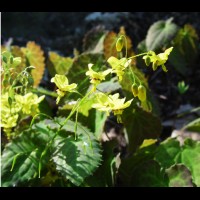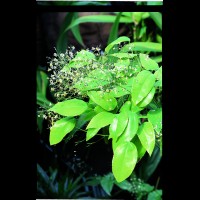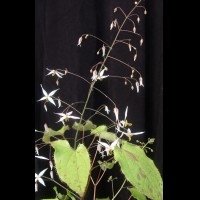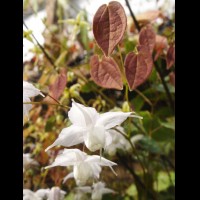E. perralderianum (Cc. 980085)
Native to the moist remnants of oak and cedar forest in northeast Algeria, this drought tolerant species forms a handsome evergreen ground cover. Smaller than E. pinnatum ssp. colchicum, it differs in that its heart-shaped, veined leaflets are in sets of three, with spiny edges that give textural interest. Flowers are much the same-- small, lemon-yellow, and rounded with diminutive mahogany spurs that bend upwards. Leaflets are patterned with red/bronze in spring and fall. Spreading rhizomes grow 2-4". First foliage flush to 4", second to 8" high. This clone is courtesy of the late David Barker, who held one of the national UK collections of Epimediums.
Native to the moist remnants of oak and cedar forest in northeast Algeria, this drought tolerant species forms a handsome evergreen ground cover. Smaller than E. pinnatum ssp. colchicum, it differs in that its heart-shaped, veined leaflets are in sets of three, with spiny edges that give textural interest. Flowers are much the same-- small, lemon-yellow, and rounded with diminutive mahogany spurs that bend upwards. Leaflets are patterned with red/bronze in spring and fall. Spreading rhizomes grow 2-4". First foliage flush to 4", second to 8" high. This clone is courtesy of the late David Barker, who held one of the national UK collections of Epimediums.





